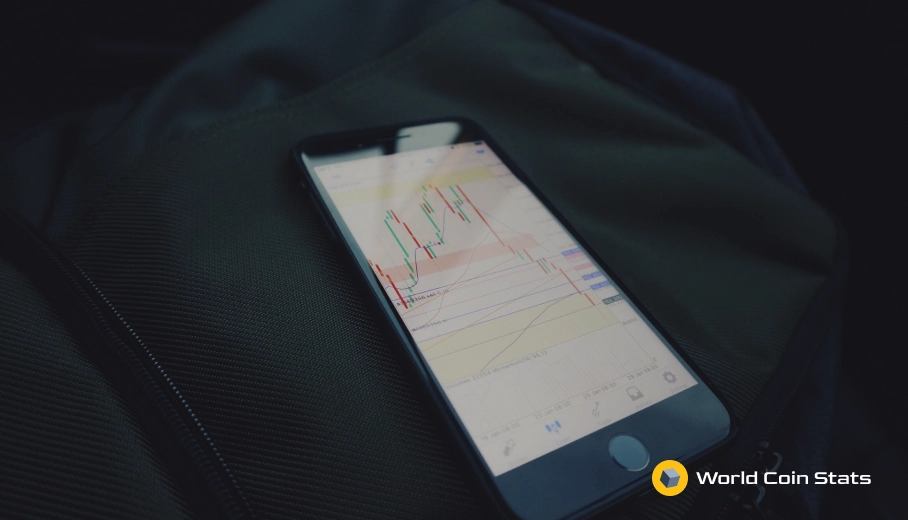Simple Steps: How to Become a Professional Trader
Are you looking for a way to become a professional trader or to start trading in your free time? To become a professional trader in such a demanding field, you must not only learn trading basics and advanced basics, but you need to have particular skills.
Traders need to have the ability to learn new things quickly and need to adapt to the round-the-clock changing environment continually. In other words, to become a profitable trader, you must have some necessary skills, but you will also have to learn trading basics and advanced basics.
Once you have mastered these qualities and obtained the needed trading knowledge, you should consider learning more about profitable strategies and try to gain some experience by trading on the market.
Let’s see what skills do you need to have to be a part of the trading sphere.
What skills do you need to possess or develop to become a trader?
- Analytical skills
- An aptitude for working with large amounts of quantitative data and continually tracking the market movements and opportunities
- The will to regularly study the market and to be able to learn quickly
- Strong personal discipline and motivation
- The ability to control your emotions
- To be realistic about this profession
If you have the needed general skills and you are sure you can develop the rest of them, then there are only a few things you need to take into consideration before becoming a trader.
Traders must demonstrate all these mentioned-above skills, but they also need to get the formal qualifications and certifications they will need.
How to Become a Profitable Trader? [Trading Basics]
In my professional career, I have concluded that many people wish they are traders but don’t ask themselves the right questions. Usually, what I hear most is: “How much money do I need to start trading?”
First of all, don’t worry about your starting capital, because you need to devote a large amount of your time to a lot of other things before you even start trading. This will give you plenty of time to save enough money for your first investment.
However, multiple sources suggest that beginners should start trading with at least $500. Once you gain trading experience, you can raise it to $1,000.
Now that I have answered this frequently asked question, it’s time to continue to the real questions that new traders should ask themselves. How can I become a trader? What are the steps?
Well, the first thing you need to do is to understand the basics of trading. This will provide you the foundation you will later need to support your entire career.
So, if you are ready, I suggest we take a look at the essential things required to lay out the foundations. This step by step guide will help you become a successful trader.
Step 1: Study Finance And/Or Go To a Business School
If your goal is to become a professional trader on Wall Street and work for a respectable investment bank or hedge fund, then you have to have a degree from a prestige university.
However, it is not necessary to have an ivy league degree to become a trader. Many of the most successful traders don’t have one.
One way to study finance and business on your own is by reading books on this topic. You can easily find many books at your local bookstore. Another way to get some clarity is by taking an online course on a reputable trading website.
Step 2: Learn As Much As You Can About Trading
To become a trader, you have to build a strong foundation of knowledge about trading, the financial market, as well as on economic and business bases. And if you have a financial or business degree, it would be easier for you to become a professional trader.
But even if you have or don’t have a degree, you still need to devote yourself to learning as much as you can about trading, before you even consider making a trade.
Knowledge is power when it comes to trading. So, make sure you study the basics of trading, the terminology used in each market, how to read charts, how to research companies, and everything related to trading.
You can find more useful information here.
Step 3: Research, Study and Analyze the Market
Both beginners and experienced traders need to study the market movement actively.
By studying the market with market analysis, traders can create a trading strategy according to their goal.
Trading strategies can help traders predict the behavior of markets and create a methodology for identifying entry and exit points.
To ensure the success of a trade, both experienced and inexperienced traders should use market strategies such as technical analysis, fundamental analysis, and sentiment analysis.
By reading and doing analysis, traders can examine charts, utilize price-based indicators that will help them build their strategy, and they can potentially capitalize on the market correction.
However, it is of high importance to note that markets can be extremely volatile. Therefore, it is impossible to predict their behavior completely. But successful traders know that no matter the outcome – good or bad – a good trading strategy can help you prepare it.
Also, since there is not a perfect strategy or method that will continuously and consistently produce winning results, traders have to adapt to the round-the-clock changing market movements.
Beginners should learn how to distinguish accurate information from false or misleading signals. Instead of spending your time on false signals, you should focus on information that will make you more efficient and help you become a profitable trader.
Also, you should research what markets have to offer you and understand the main differences between each market to make the right investment decision, because you can invest in:
- Shares
- Indices
- Forex
- Commodities
- Cryptocurrencies
As you can see, there are a lot of things you need to take into consideration before you decide which market you want to become part of. So, take your time to study the markets because once you know them and specifically the market you want to invest in, it is much easier to make the right decision.
Step 4: Build a Trading Strategy
The next step is the driving force behind your trading plan. Before you spend any money is to establish at least two different trading strategies that will help you generate a profit in your chosen market.
These strategies need to define how you will enter and exit your trades, what kind of capital you will invest, the value of the trades, and the frequency of the trades.
Both experienced and inexperienced investors should keep in mind that markets are highly volatile. Even the best strategy won’t bring you profit unless you can read situations and adapt to the circumstances quickly.
The moment your strategy stops working, you have to adapt to the market situation and come up with a new approach.
Also, there are a variety of different trading styles, and their goal is to help traders profit from movements in the asset’s price. The most common are:
- Day Trading
- Scalping
- Swing Trading
- Position Trading
The key factors you need to take into consideration when it comes to finding the right trading style, depending on your goal, lifestyle, and personality are:
- How often you want to trade
- How long you will run each trade
- How much you want to spend trading
Once you have decided on your trading style, you should build a trading plan. However, to make sure your trading strategy, and plan produce profits consistently, you need to continually study charts, observe the market, search for specific market patterns or tendencies.
Winning every trade is not the goal. You don’t need to win every single trade to make a good living. You need to stay focus, and if you do the right things before and during your trade, favorable results are more likely.
Step 5: Gain Trading Experience
When it comes to trading, gaining trading experience is all that matters. The best way to ensure your trade is to invest only what you can afford to lose. It’s a good idea to start small, because this way if your trade was wrong, you will miss small.
However, even if you lose a trade, you should be able to learn from your mistakes.
Make sure that you are consistent and that you are not making decisions based on emotions. When you are a new trader, there is a high possibility of making a mistake.
Bottom line
In conclusion, if your wish is to become a trader on Wall Street the traditional way with a degree from the ivy league universities, then you have a lot of sleepless nights studying in from of you.
However, if you want to travel the world and trade from any and everywhere in the world, then you should look at what is working for you and what types of trades are most consistent in terms of making profits.
Only with consistent learning and analyzing the market, you can increase your position over time. Once you learn the advanced basics of trading like how to monitor trading performance, and for example, what is risk management, you can create a steady career as a successful trader.




